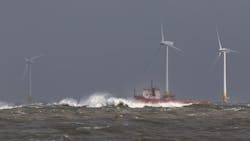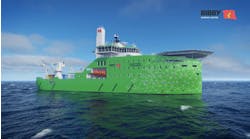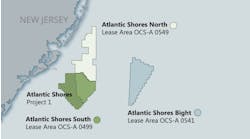Opinion: Real-time sea state data are invaluable in improving the safety of offshore wind operations
By Maggie McMillan, Miros
The offshore wind industry continues to push the boundaries of where it operates, moving ever more into deeper waters and harsher environments. That drive to advance must be matched and exceeded by our commitment to further enhance the safety of the people who operate and maintain these assets.
The transfer of crew between vessels and offshore wind installations has always been an inherent risk, a risk compounded by the vagaries of the challenging and changing weather conditions found offshore.
In an industry poised to experience exponential growth over the coming years, the need to send personnel offshore to conduct the operation and maintenance (O&M) of those assets, many in more hazardous areas than previously experienced, will also rise. This is an urgent reminder that identifying ways to minimize the risks faced by the workforce must always be a priority.
According to the most recent annual incident data report drawn up by the G+ Global Offshore Wind Health and Safety Organisation, crew transfer vessels (CTVs) were the second highest incident area across the industry in 2021.
The 85 recorded incidents represented an increase of 8% on the previous year. Of that total, 18 were classed as high potential incidents, including injuries, near misses or hazards, which had the potential to cause or did cause a fatality or life-changing injury. Transit operations accounted for 19 of the total number of incidents, about one-third of which were classed as high potential incidents.
In recognition of the importance of CTVs to the offshore wind sector, the G+ Global Offshore Wind Health and Safety Organisation established a work stream for 2022, working in partnership to consider how to improve safety onboard vessels and looking at issues such as fatigue, staffing levels and vessel suitability.
Navigating severe weather conditions
However, the industry must also look at how it can make the sea safer for everyone whose livelihood depends on the marine environment. We may not be able to control the weather, but thanks to innovative and disruptive new technology, we can control the degree to which the weather controls us.
Many hazardous transfer operations can be mitigated or avoided completely with more accurate knowledge and improved monitoring of weather and sea state conditions.
The use of advanced digital tools, data collection and evaluation, which gather real-time information about sea state or weather conditions, will reduce the risk to maintenance crews. This will play a critical role in helping with the planning, safety and efficiency of transfer operations by enabling enhanced preparedness and avoidance of high-risk conditions.
In response to mitigating safety incidents, Miros has developed high performing Internet of Things enabled sensor technology that gathers real-time and historical sea state and weather conditions at the access sites offshore. This critical data allows more informed decision-making on vessel dispatch, reduces safety risks to maintenance crews, and enables improved planning and efficiencies to transfer operations while supporting opex reduction.
The next generation of monitoring systems, with its provision of information, can influence and inform likely costs of both scheduled and unscheduled maintenance.
It is a far cry from the way information has been collected before now. For the past 70 years, wave buoys, combined with weather forecasts, have been the go-to technology used to analyze the frequency, behavior and direction of waves in oceans across the world.
However, as a single point of measurement on a wind farm site covering multiple square kilometers, their accuracy and ability to share real-time information with several stakeholders is limited.
The use of bathymetrical studies during the planning and development phase of wind farms will identify the most suitable sensor locations.
Placing RangeFinder sensors at specified turbine and offshore substation (OSS) locations across the wind farm will directly inform a more accurate localized weather forecast and provide a more precise holistic overview of the differing sea state conditions as they develop, which are unique to every individual wind farm.
This smart technology can also be retrofitted into existing first- or second-generation installations, where the access and sharing of data has proven challenging, with strategically placed sensors supporting safer and more efficient operations and maintenance planning, execution and life extension activities.
The ability to gather and share data in real time with multiple shareholders is invaluable. For example, a project manager based remotely and the operations manager at the marine operations base can simultaneously view the actual sea state conditions on site on real-time dashboards, accessible anytime on any device. This directly impacts the decision as to whether it is safe for personnel to be transported via CTV at a specific time.
Installing smart dry sensors across the wind farm also gives teams information on the variation in environmental conditions across the entire site at any time. In certain scenarios, it is possible to perform maintenance in one part of the wind farm where the sea is calmer while wave and weather conditions in another area may be less favorable.
As the size of wind turbines increases, so will the distance between them, meaning that navigating vessel planning and O&M activity scheduling will inevitably become more challenging. With the wave and weather measurement and analysis solutions at our disposal, it is incumbent upon us to make sure we minimize risk to all the people who work in some of the most hazardous environments in the world, at present and in the future.
About the author: Maggie McMillan is vice president of renewables at Miros.
11.04.2022





